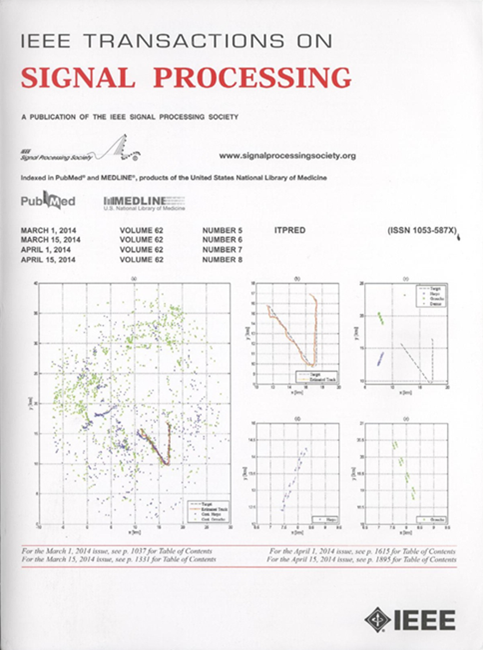基于嵌套极码的可靠鲁棒自适应隐写编码
IF 4.6
2区 工程技术
Q1 ENGINEERING, ELECTRICAL & ELECTRONIC
引用次数: 0
摘要
隐写术是一种追求隐蔽性的秘密通信艺术。在最常用的隐写框架——自适应隐写中,发送方将一个“秘密信息”信号嵌入到另一个“掩蔽”信号中,根据测量所产生的失真的某种自适应失真函数,形成与掩蔽相似的复合“隐写”信号,接收方从该隐写中提取“秘密信息”信号。当发送方和接收方之间的通信信道存在噪声时,需要进行鲁棒隐写,其中鲁棒自适应隐写编码起着核心作用。现有的鲁棒性自适应隐写编码方法只能提供非常有限的鲁棒性,并且在通信信道较差的情况下失效。为了保证隐蔽通信的成功,我们提出了一种可靠的基于嵌套极码的鲁棒自适应隐写编码方案,该方案在保持安全性能的同时,在现有算法中具有最高的鲁棒性。理论上,我们证明了对于最重要的二值嵌入,在通信信道为二进制对称信道(BSC)的特殊情况下,当设计嵌入率足够大时,覆盖长度$N$通过2的幂趋于无穷时,所提出的方案在恒定失真轮廓下是最优的。实验表明,我们的方法能够在嵌入率较大或通信信道较差的情况下保证秘密信息的完美提取,而现有的算法在这些情况下并不适用。本文章由计算机程序翻译,如有差异,请以英文原文为准。
Reliable Robust Adaptive Steganographic Coding Based on Nested Polar Codes
Steganography is the art of covert communication that pursues the secrecy of concealment. In adaptive steganography, the most commonly used framework of steganography, the sender embeds a “secret message” signal within another “cover” signal with respect to a certain adaptive distortion function that measures the distortion incurred, contributing to the composite “stego” signal that resembles the cover, and the receiver extracts the “secret message” signal from the stego. When the communication channel between the sender and the receiver is noisy, robust steganography is needed, in which robust adaptive steganographic coding plays a central role. The existing robust adaptive steganographic coding methods can only provide very limited robustness, and they fail when the communication channel is bad. To ensure the success of covert communication, we propose a reliable robust adaptive steganographic coding scheme based on nested polar codes that possesses the highest robustness among the existing algorithms while the security performance is also maintained. Theoretically, we show that for the most important
binary embedding
, in the special case where the communication channel is a Binary Symmetric Channel (BSC), the proposed scheme is optimal under the constant distortion profile as the cover length
$N$ design embedding rate
is large enough. Experimentally, our method is capable of making sure the perfect extraction of the secret message in situations where the embedding rate is large or the communication channel is bad, while the existing algorithms are not applicable in these scenarios.
求助全文
通过发布文献求助,成功后即可免费获取论文全文。
去求助
来源期刊

IEEE Transactions on Signal Processing
工程技术-工程:电子与电气
CiteScore
11.20
自引率
9.30%
发文量
310
审稿时长
3.0 months
期刊介绍:
The IEEE Transactions on Signal Processing covers novel theory, algorithms, performance analyses and applications of techniques for the processing, understanding, learning, retrieval, mining, and extraction of information from signals. The term “signal” includes, among others, audio, video, speech, image, communication, geophysical, sonar, radar, medical and musical signals. Examples of topics of interest include, but are not limited to, information processing and the theory and application of filtering, coding, transmitting, estimating, detecting, analyzing, recognizing, synthesizing, recording, and reproducing signals.
 求助内容:
求助内容: 应助结果提醒方式:
应助结果提醒方式:


